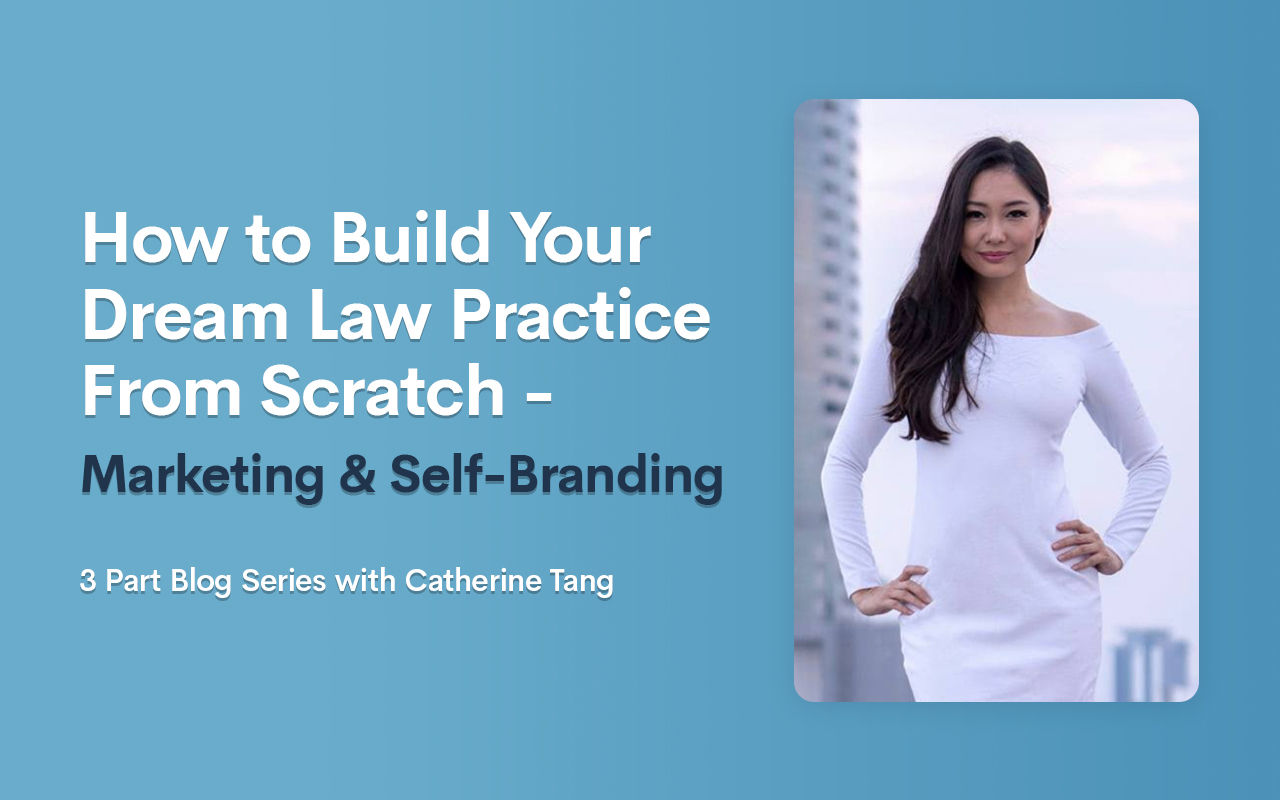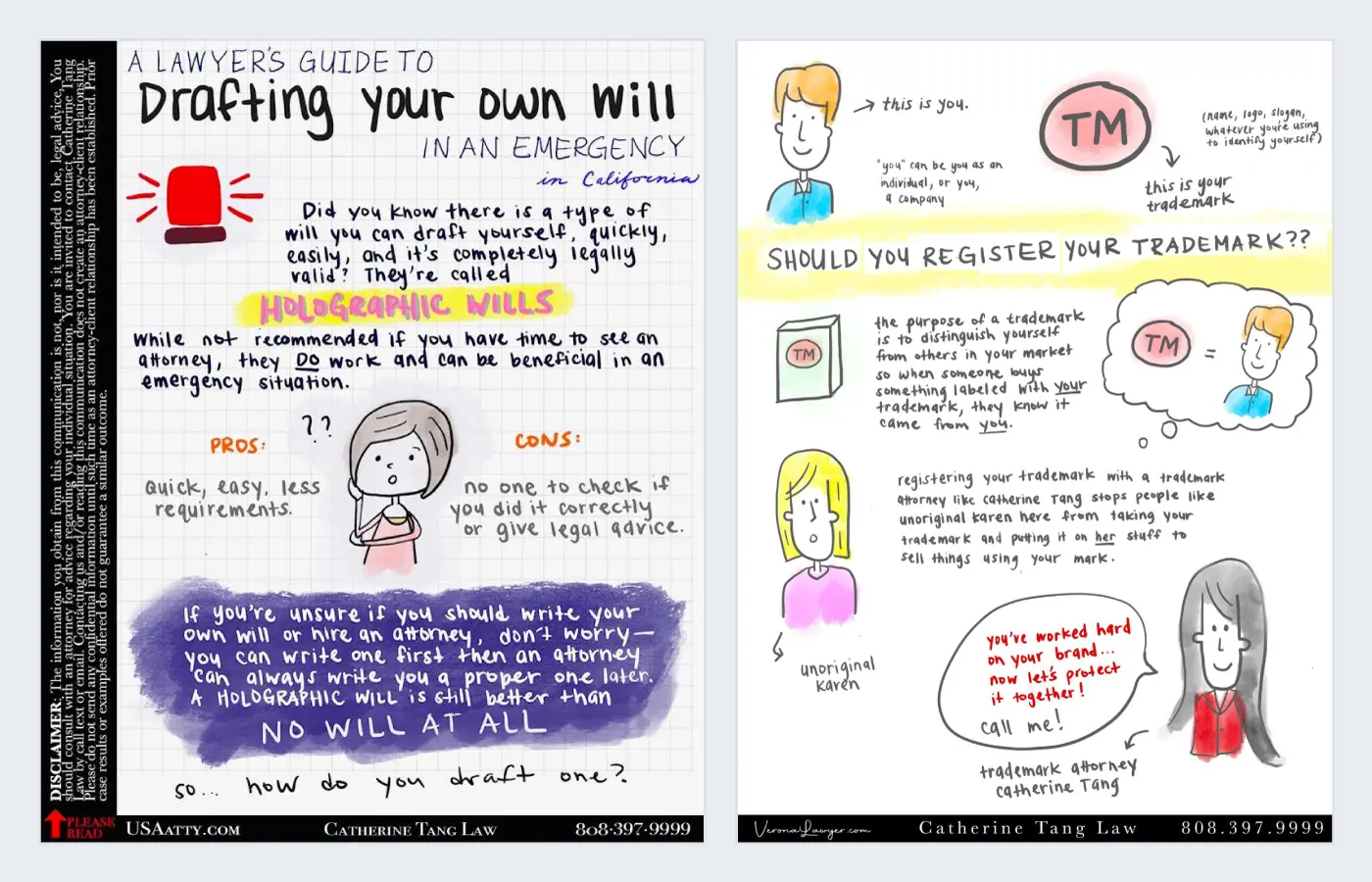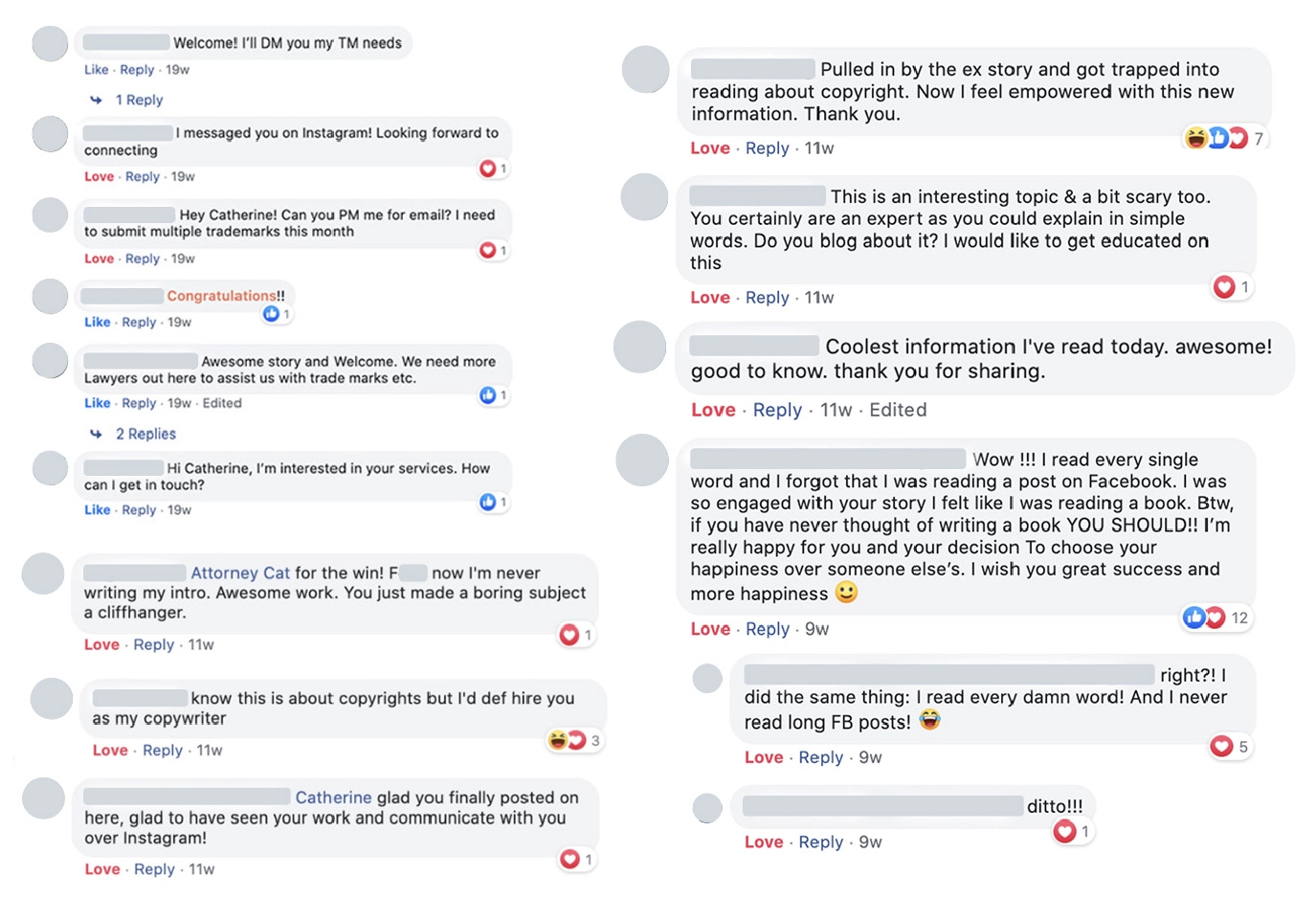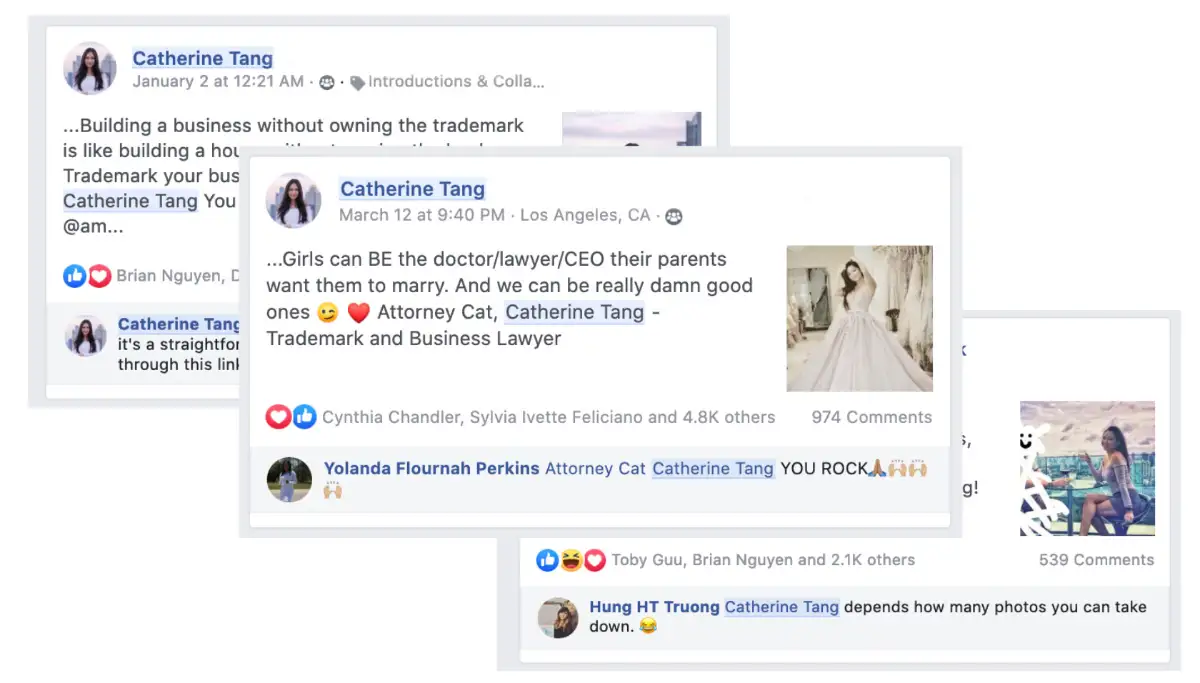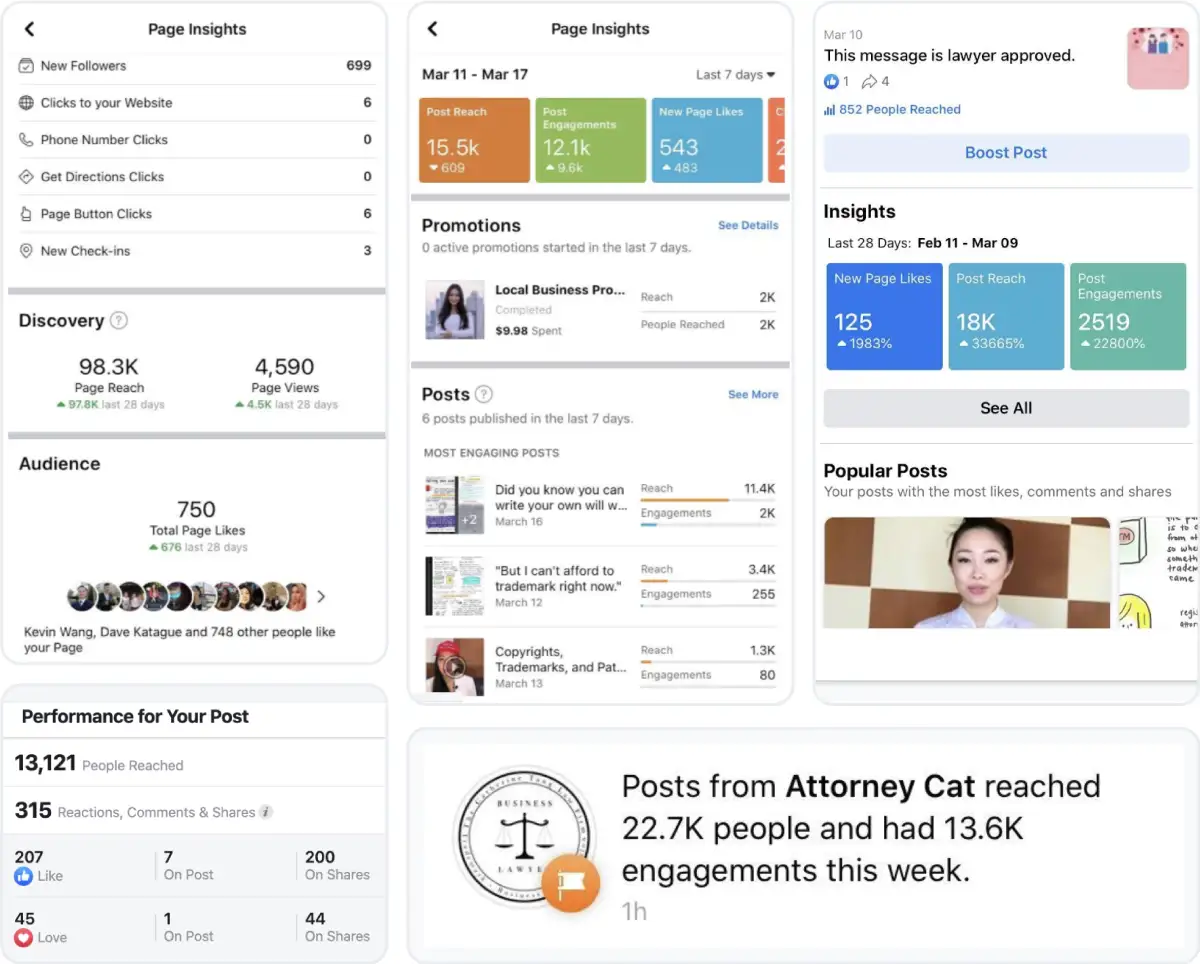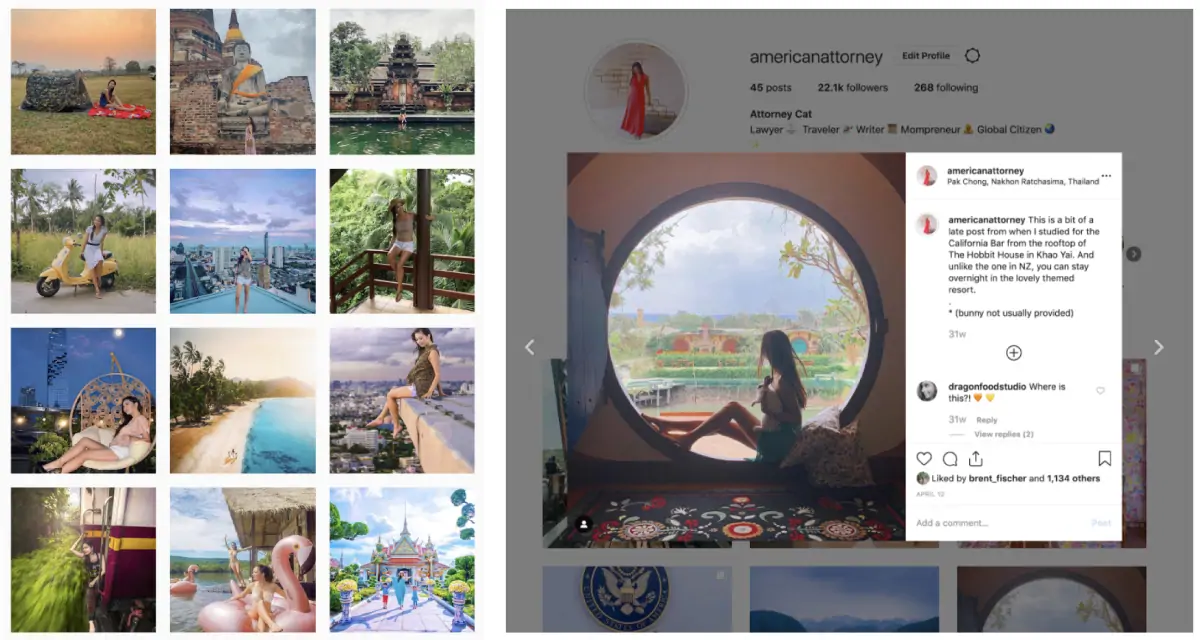How to Build Your Dream Law Practice From Scratch - Marketing & Self-Branding

Catherine Tang is an intellectual property lawyer, business owner, and single mother of 2. After launching her virtual law practice abroad, she relocated to Madison, Wisconsin to manage life and legal work on her own terms. In just a couple of years, she built a substantial following on social media that has generated continuous business and lucrative networking opportunities to fuel her brand awareness and lifestyle.
In this 3-part blog series, Catherine offers insight into living a fulfilling life while managing a busy law practice.
Abroad and back again
I started my law firm from overseas right before the start of the pandemic. Becoming a firm owner was the end goal before I even started law school, but I didn’t think it would happen so early on in my legal career. I am a single mom of two young children and had been living in Bangkok, Thailand working in international corporate law. When I passed the California Bar the firm I worked for presented a few options to me. They had a large presence in Asia with a base in Singapore. I was told I could move my family to Singapore, or stay in Thailand and start working full time. My work hours would become increasingly more demanding, sometimes requiring me to entertain clients or senior partners in town or travel to other countries regularly, as is the norm abroad. I knew that if I stayed with them as a foreign, American educated, native English speaking attorney I would enjoy success in my career, but as a mother I wanted to be around for my children especially at their young age. It was then that I decided I would open my own firm.
The decision to leave security and a modicum of success for the unknown and unstable is never an easy one. It was a bit easier for me knowing that if I failed horribly I had job offers waiting for me back in the States…. but it was terrifying nonetheless. In early 2020 I hung a shingle as a virtual lawyer and only two years later, I have a successful award-winning law firm with a beautiful office located directly across from my local courthouse.
My practice remains virtual friendly for the most part, I have the best clients that are located all over the world, and I have never had to meet most of them in person. More importantly though, my practice has allowed me to thrive in my personal life like no law firm job could have ever done. As a virtual firm operating during a pandemic with initially no physical presence whatsoever in the US, marketing and social media became integral to the success of my firm. It was the one and only way prospective clients could find me. In this article I will discuss a few key concepts to focus on when building a social media profile for attorneys hoping to build a law firm, as well as some additional thoughts on successful social media marketing.
Embrace the downtime
When you are starting a law firm from scratch, you might find yourself coming up with a clever law firm name, hiring someone to make a website, getting your headshots taken, and all those other ancillary necessary-but-not-income-generating parts of building a firm. You may also find yourself with no clients to serve and a business line that doesn’t ring. What I have learned is to embrace this time-- it is time for you to build your practice, focus on content creation, establish your systems, and generally improve your firm so that when clients do come in, you are ready to serve in the most efficient manner. My law school electives were almost entirely focused on family law and estate planning. I did not anticipate that I would be practicing from another country where very little of what I had learned really applied, if at all. Furthermore, pre-covid, the legal industry as a whole was not remote-friendly. I very quickly realized that certain types of law such as most litigation was probably out of question since I was very far away from the nearest American courthouse. I was also in the opposite time zone. I had always imagined myself as a litigator but since it seemed impractical if not impossible at that time, I ended up focusing on transactional law: business and intellectual property with a focus on trademarks. This is a topic I knew nothing about before opening my practice. Thus, I used my free client-less time to learn every single thing I could find on trademarks and business law. I took multiple courses, watched every CLE I could find, and read books and practice guides. I took notes during the learning process…. And then I transformed those notes into social media content.
Pick a platform then speak to your audience
My platforms of choice are, in no particular order, Facebook, Instagram, and Youtube. The very first thing I did when building my firm was repurpose the law that I learned into multiple short bits on various platforms. Importantly, I did not merely recite what I learned in a dull manner. While some of my content is solely legal focused, most of it I try to weave into stories that are both entertaining and informative to the average social media user.
One of the things I try to convey when teaching lawyers about marketing is that often I have seen lawyers use marketing to benefit themselves, to try to promote their firm. The most effective form of marketing, in my opinion, is content that benefits the audience. Think not about what people can do for you, but what you can offer to others. What I mean by that is that an advertisement about how your law firm just opened and everyone should call your law firm is just that: an advertisement whose sole purpose and beneficiary is the promotion of yourself. A person scrolling through social media on a Sunday afternoon is not scrolling so that they can benefit you. They are scrolling for their own enjoyment and spikes of dopamine. With traditional social media advertisement posts, people ignore them and scroll on to their desired content. What I try to do when creating content is create content that will catch the reader's attention, get them to want to read it, and remind them that I am a lawyer ready to assist should they ever come across a legal issue. Oftentimes, I do not even directly talk about the services I provide. The only thing that I care about is leaving an impression and keeping at the top of a person's mind so that if and when they run into a legal issue, they think to call me. I have had a lot of success doing this by creating engaging content that people want to see. Generally by the end of a post, if I have done my job, there are people asking me for more content, finding a way to stay in contact …or hiring my firm.
Think about back in the days when we only had cable tv. During a commercial, many people tune out, leave to get a snack, and while it may still get that person to recognize or buy your product some day, most people do not actively engage in commercials except perhaps during the Super Bowl which has mastered the art of entertaining advertisements. Most law firm marketing I see is the equivalent of a channel playing commercials all day long. Not memorable, not engaging, and not that effective. Effective marketing, in my opinion, is making your content the entertainment. Make your content the show they’re waiting to see… and your law firm is merely the product placement in the background. By doing this, you are creating content that people want to see, that people share, thereby creating algorithm favoring viral content. I would be the first to admit that creating viral content based on law is not easy …but can be done.
Learn and break the algorithm
My first few months of practice I set out to combine my knowledge of law with my knowledge of social media to create viral posts that trend. If you are unfamiliar with those terms, we’ll take a minute now to explain. When social media first became a thing, posts by users were shown in reverse chronological order in a feed, by any person you were connected with. The newest post would show on top, and it didn’t matter if a person posted any random thing multiple times, it would still show all their “friends” their content in the order it was posted. Before long, the Zuckerberg’s of the world realized that the more entertaining they could make the experience of their platform be for you, the longer you would stay on, and the more their company would be worth. Thus came the introduction of algorithms. Nowadays, most social media platforms employ algorithms that use machine learning beyond the scope of this author’s full understanding to figure out which posts are the most entertaining to the average human being, and they show you those posts first. This formula ends up showing you the most entertaining, likable, funny, and/or controversial posts first Often, the ranking of a post is based on the user engagement (likes, shares, comments, length of time spent reading/watching it), with highly engaging posts being shown to the most amount of users, and posts with little engagement get pushed down the social media abyss, never to be seen by your friends or future clients, ever.
While this formulaic approach may seem exhausting, take comfort in that I typically think that if done correctly, you do not need to be posting content multiple times a day, or even every day as many social media experts seem to suggest. In fact, I took my time coming up and releasing my posts, usually releasing a single marketing directed post every month or two. The catch of course, is making sure those posts trend. Each of the posts I released received thousands of likes and hundreds of thousands of views. With practice, you inevitably learn what people want to see. In fact, it is practically a pavlovian response as you will receive “likes” for everything you do right, and the dreaded social media abyss if you do not. Unlike conventional social media marketing advice, I do not post the same content on all of my platforms. I prefer to custom tailor my content to each platform and want to encourage users to add me on all of them due to the variety of content they will get on each. I spent the first 6 months of my law firm actively marketing, and I am still reaping the benefits of my initial marketing posts to this day. In fact, I rarely actively market at all these days. I often get messages from people saying they had read a post of mine from a long time ago and now that they’ve run into a problem I was the first person who came to mind. Marketing, when done correctly, should have a snowball effect if it is combined with good service.
I started my instagram while still in law school and then when I moved to Bangkok I started posting photos of my travels for friends to see. However, my audience slowly began to grow. As my followers grew, I started getting free things and those perks did not go unnoticed. Initially a free upgraded meal turned into a free meal. Then a free upgrade at a hotel, and eventually fully paid for week-long resort vacations in exotic places. I started putting more and more effort into my photos and captions, and regularly studied what made other posts trend down to the hashtags. Since Instagram was very focused on aesthetics and beautiful photography my posts became more picture perfect. The way I tied it into law was by telling stories about what I was doing at work at the time the photo was taken, or sometimes the story was entirely unrelated but somehow complimented the picture. With Instagram the main components for a viral post are the photo, the caption, and the algorithm. What I did not like about instagram and why I eventually stopped focusing on it is because it required a constant flux of picture perfect photos which as a full time practicing attorney I have a hard time keeping up. (This is changing soon as Instagram has lost a lot of creators to TikTok and they are now focusing on video content and loosening their algorithm). Nowadays I mostly use it to post stories and give snippets of my day to engage with followers. However, different attorneys are able to produce different vibes on instagram. Mine was highly focused on travel photos. I have seen many attorneys employ a different approach with more business oriented posts which can be successful if done the right way. Importantly, the number of followers you have does not necessary directly translate to the amount of paying clients you get. Because I incorporated a travel theme, my audience net was larger… however the same people looking for travel content might not be the same people needing legal services. The conversion percentage is lower than a legal instagram focused and targeted directly to business owners (or whoever your target client is). Likewise, because I primarily practice federal intellectual property law, it makes sense for me to cast a wide net because anyone with a US business can potentially be a client of mine. Whereas if you are a local personal injury law firm, you may want to target people in your general location.
No matter which social media platform you decide to use to grow your business I think it is important to study it as each platform favors different content, has its own unique characteristics, and different algorithms. Instagram often favors visually appealing images and puts the most focus on picture perfect photos, with a caption as an aside. On Facebook you can mix in a variety of photos, text, or I have seen some profiles that have great success merely posting curated news articles. Engaging in witty banter is valuable on Facebook. LinkedIn has a more professional feel and is one of the best platforms to use in order to reach people outside of your network (you can“trend” easier). Instagram, Facebook, and Twitter are platforms that are very “in the moment” and require you to post constantly to stay relevant. Youtube on the other hand is great for people who want to make content once and have it searchable for a long time. Writers may favor Facebook and speakers may gravitate to Youtube or Tiktok.
A few final tips
Lastly when growing your social media presence I think it serves well to keep a few things in mind:
Quality over quantity. As noted above, the number of followers you have or likes you get on a post does not always directly translate to business or cash in hand. Some of most successful business-generating posts do not always have the most likes. Similarly, a person with 100,000 followers may not always be the highest revenue generating firm. My favorite example of this is legal meme accounts. Yes they may have a lot of followers because they’re posting relatable, funny memes…. But none of their followers are reaching out to them when there is a legal issue at hand. Do not be discouraged or compare yourself to others.
Consistency is key. Starting out a new social media account can be overwhelming and it can seem like no one is paying attention to your posts. It doesn’t matter. What you are doing is building a foundation so that when you get your first “viral” post, those who view your account see all your previous related content and follow you. In the social media world it is very common to go from 5 followers to 5000 overnight because of a single post.
Marketing is a learned skill. Once you learn social media marketing skills they are generally easily transferable to other platforms. Start with one platform and get really good at that platform before moving on to another. Watch other content creators and try to figure out what they are doing that speaks to their audience, then try to do it on your own. Think about what worked and what didn’t, and why.
I think most important of all is to have fun with it. I believe a large part of my social media success is because I enjoy content creation and engaging with my audience. In life, time is our most valuable asset. If you aren’t doing what you like with your time, you are better served using your time to do something else. Social media is not for everyone, and that is ok. There are many different ways to bring clients into a law firm, and while social media is highly effective, there is also paid advertising, in person networking, and many other ways to build a law firm. You can also outsource the job entirely. Bringing clients in from various means is just one piece of the overall puzzle of a successful law firm. Success is defined differently by different people. My personal aim is to build a law firm and lifestyle that I love, and having plenty of time for my kids. -- something we’ll talk about in the next article.


